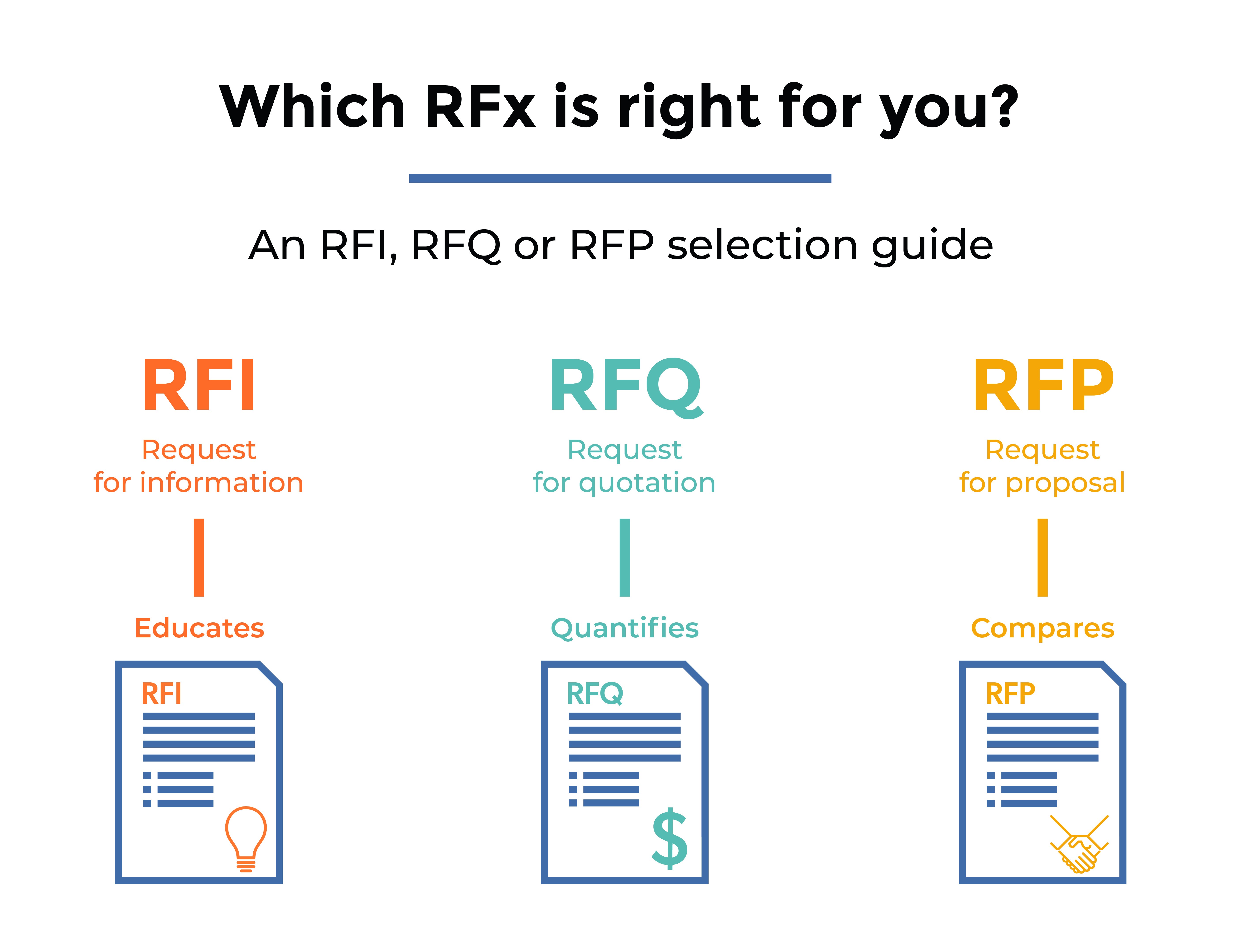It’s no secret that RFPs are time consuming. From beginning to end, an RFP timeline may span weeks, months or, even in some extreme cases, years. Unfortunately, the long process results in impatient stakeholders, costly procurement projects and frustrated vendors. Consequently, procurement professionals feel pressure to deliver fast results. However, the process is far too important to rush.
In this blog, I’ll explore ways to save time throughout the RFP process. To start, I’ll offer an overview of the steps involved in the average RFP. Then, I’ll share ways to optimize your RFP timeline, achieve success faster and, ultimately, reduce the cost of procurement. Finally, I’ll offer three helpful RFP timeline examples.
An overview of the RFP timeline
So, how long does the RFP process take? It depends. Ideally, the average RFP timeline spans six to ten weeks. Of course there is a lot of variation in RFP timelines, depending on the size of your team, the number of vendors included in the RFP and the type of questions asked. For example, recurring RFPs issued to known vendors can often be shorter and more focused, accelerating the timeline. On the other hand, strategic sourcing RFPs for complex projects and services typically include open-ended questions with room for creativity. Accordingly, it takes longer to manage and score RFPs with subjective questions.

While your specific RFP process timeline will vary from project to project, the essential steps will remain mostly the same. Each step in the RFP process falls into one of three categories: RFP creation, administration or evaluation. Explore information about the individual steps below.
Steps in the RFP process
RFP creation (1-3 weeks)
- Issue identification: The procurement project is initiated when a need or challenge is identified
- Requirements gathering: The procurement manager collaborates with stakeholders and executives to determine what is needed
- RFP creation: The procurement manager writes the RFP
RFP administration (3-6 weeks)
- Vendor selection: The vendors who will be included in the RFP are selected
- RFP issuing: The RFP is officially issued to the selected vendors
- Question and answer deadline: Vendors submit their questions about the RFP and the procurement manager answers them
- Response period: Vendors prepare their responses
- RFP deadline: The procurement manager receives the completed proposals
RFP evaluation (1-4 weeks)
- RFP scoring: Stakeholders and executives score the proposals
- Proposal evaluation: The procurement manager evaluates the input from the scoring process
- Recommendations: A recommendation is made by the procurement manager
- Shortlist: If no winner is identified, a short list is created
- Second RFP or RFP presentations: Vendors submit additional information or give an RFP presentation
- Final recommendation: The procurement manager makes a final recommendation
- Negotiation and contracting: The contract reflects any negotiation
- Award: The contract is executed
- Announcement of winner and closing of RFP project: All vendors are notified of the result of the RFP
To explore these steps and the RFP process in more detail, download the ebook: The RFP process guide.
Tips to shorten the timeline of an RFP
Certainly the benefits of a shorter RFP timeline should be obvious. Because procurement is about problem solving, the shorter the process, the faster your business benefits. An optimized RFP timeline yields happier stakeholders, better vendor relationships and lower procurement costs.
When considering how to shorten the RFP timeline, you must weigh all of the factors. Rushing through or skipping steps is risky. For instance, moving too quickly may result in unclear expectations and a bad vendor relationship. Now you have a new problem to solve. So you issue another costly RFP and select a new vendor causing significant disruption to your business.
Despite these challenges, there are safe and dependable ways to speed up each of the three phases within the RFP timeline.
Use a constantly evolving template library to speed up RFP creation
RFP creation is a labor intensive process. Therefore, it’s full of opportunities to optimize. The biggest time savings in this area comes from using templates. Of course, RFP templates are widely used, however, best practices aren’t always followed.
Unfortunately, many companies who use templates don’t update them regularly. Seeing these RFPs with irrelevant questions is frustrating and discouraging for vendors. For example, seeing a requirement for a fax number is a dead give away that the template hasn’t been updated recently. In addition to regular updates, RFP templates should be highly customized to each project.
I suggest you create a library of RFP templates and categorize each by the procurement project type. In addition, you can take your time savings one step further, by grouping topical questions together and saving them as sections that can be dropped into new RFPs. You can do this with terms and conditions, scope, specifications, customer success questions and so on.
As new procurement projects conclude, review the RFP and decide if it should become a template for future use. Be sure to make notes about which questions yielded good insights and which had to be clarified. Your templates should continually evolve.
Provide plenty of background information to simplify RFP administration
During the RFP process, it’s inevitable that supplier questions will arise. Often, these questions prompt a lengthy back and forth. Then, procurement professionals must send the resulting information to all of the competitors to ensure everyone has an even playing field.
To save time during the administration step, start by providing ample information to suppliers in the initial RFP. For example, provide details about the businesses’ current state and relevant background information. What pains and challenges are you trying to address? How does the process work now? What would an ideal solution look like?
While it certainly takes time to prepare, most of the information you need should be readily available in your requirements discovery. Providing this context empowers suppliers to present the best possible solution for your problem. In addition, it enables potential suppliers to get a deeper understanding of the business — setting them (and you) up for long-term success.
Use other RFx documents to shortlist vendors and aid evaluation
Long RFPs are hard on the vendors who must respond to them. Likewise, an RFP with hundreds of questions sent to dozens of vendors yields thousands of data points that the procurement manager must evaluate. The solution? Shorter RFPs sent only to select vendors.
Using a multi-step process to undertake new procurement projects can shorten the RFP timeline significantly. Start with a request for information (RFI) to discover what’s new in the market, conceptualize possible solutions and get to know the vendors. After the RFI, issue a request for qualifications (RFQ) to learn more about each vendor’s relevant experience. Then, evaluate the remaining vendors and issue the RFP to only the most promising vendors.
Check out this RFx selection guide infographic to learn more about other RFx processes: RFx selection guide: RFI vs. RFP vs. RFQ.

Now, because you already know a significant amount of vendor information from the RFI and RFQ, your RFP can be quite short, sometimes called an RFP lite.
Breaking up the process with this multi-tiered approach saves time overall. In addition, it makes evaluation of proposals much easier and lightens the burden on suppliers. Similarly, maintaining vendor profiles with background and general information for recurring procurement projects allows RFPs to be much shorter and project-focused.
Adopt RFP software to improve all three RFP phases
If you’re not satisfied to simply optimize one step at a time, but instead want to improve all three phases of the process at once, RFP software delivers. Also called strategic sourcing software, it is designed to shorten the RFP timeline from beginning to end.
RFP creation
The amount of time spent creating an RFP adds up. From gathering information and requirements to finding the right questions to ask, it can take weeks to ensure your procurement project is set up for success. However, with RFP software procurement professionals can centralize stakeholder input, making it easier to create an effective RFP. In addition, an RFP management system enables you to store and organize RFP templates and sections.
RFP administration
Averaging three to six weeks, RFP administration is the most time consuming phase of the RFP timeline. To make the process more efficient, strategic sourcing software enables vendor communication without clogging your inbox. It also provides insight into the vendor response process with real-time progress tracking.
Not only does RFP software shorten the RFP timeline for procurement teams, but it also streamlines the proposal process for vendors. The software empowers them with a knowledge library, collaboration tools and dashboards. So, you end up with fewer extension requests, faster proposals and more responsive vendors.
RFP evaluation
While RFP evaluation generally takes one or two weeks, it is the phase of the process that is the most unpredictable. Managing an RFP with a dozen vendors and a hundred questions is much easier with RFP automation. The technology provides weighted scoring, individual stakeholder evaluation and side-by-side vendor comparisons ultimately making decisions faster and more clear.

For more information about strategic sourcing software and a business case template, check out this blog: Strategic sourcing software guide and business case.
RFP timeline examples
When trying to review and optimize your own RFP timeline, seeing an example of a typical RFP process can be incredibly helpful. Each of these RFP timeline examples offers a unique perspective on the process.
Cybersecurity and Infrastructure Security Agency RFP timeline example
SAFECOM and the National Council of Statewide Interoperability Coordinators (NCSWIC) collaborated together to create this RFP timeline example. The document also offers helpful RFx definitions, flowcharts and guidance for the procurement process.
Progressive Technology Project RFP timeline guide
This RFP timeline example is from a non-profit organization that estimates a procurement timeline ranging from three to eight months. However, it is worth noting that this particular timeline is based on manual RFP creation, administration and evaluation.
Tribal Evaluation Institute RFP timeline example
The Tribal Evaluation Institute created and shared this RFP process example to help their internal stakeholders better understand the procurement process. It explores each phase of the process in depth, sets timeline expectations and engages stakeholders in the process.
Ultimately, your RFP timeline has to work for you and your business. However, being as efficient as possible throughout the process improves stakeholder satisfaction and vendor engagement. As you explore your own RFP timeline and discover new ways to optimize it, share your findings with your procurement team and executive leadership. The more information you share, the better your business will understand the importance of taking the time to do it right.
